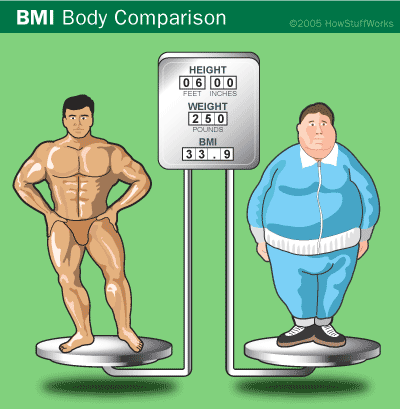Measuring Obesity, Body Fat and BMI
Posted by Stephen O'Hare, President of Pedors Shoes on Aug 18, 2014
Measuring Obesity, Body Fat and BMI. How accurate is it?
It came as a bit of a relief. A few weeks ago having inadvertently discovered that I was borderlineobese with a BMI of close to 30, the Wall Street Journal has set me straight. I know the Journal might not be everyone’s cup of tea but I particularly enjoy the weekend edition and I consider it a trusted source of quality journalism. Last weekend BMI was taken to task and found wanting.
Seems that Body Mass Index has been catching a bit of flak recently and as a formula that is 180 years old, it is considered a tad outdated as a primary measure of obesity as it doesn't distinguish between muscle and fat. At best it’s a proxy for measuring body fat, useful for measuring overall trends when measuring obesity in the general population. Phew. I’m safe. As a self-diagnosed athlete, I’m all muscle!
This handy illustration from howstuffworks.com really brings home the point.

In fact, I’m beginning to think that perpetrators of the BMI standard perform a public dis-service. As the director of preventative cardiology at the Mayo Clinic, Dr. Francisco Lopez-Jimenez points out, obesity is currently defined by weight and not fat and there doesn't exist a definition of obesity according to fat percentage.
We need a new standard. Some clarity on the issue would not go amiss, we need a gauge for everyone to live by. Something we can rely on other than your brother calling you a fat so and so, or a husband telling his wife that a particular pair of jeans doesn't make her rear look fat (it’s never the jeans). A way to measure body fat that is less expensive than taking a CT or an MRI.
A way for big muscle guys who pump iron, to the lean muscle guys who swim or cycle, to the guy on the street who may have a few concerns about his weight. A way to get a handle on where they are health wise and what they need to get to. Defining overweight as having a BMI of over 25 just doesn't cut it for me.
More important than trying to help the relatively healthy get a take, we need to be able to get a read for use in a routine clinical practice setting. If a patient goes to see their doctor for their annual check- up they should be told what percentage of their body is fat. Someone at risk can be advised of the inherent risks of becoming pre-diabetic or full blown type II diabetic. This protocol should be a prophylactic approach to reducing nationwide obesity. Progress can be charted year to year, even month to month for those at risk.
I guess until someone at the WHO or CDC comes up with that, people will continue to use BMI as an indicator for obesity and BMI will continue to be discounted by many as an inaccurate tool for measuring fatness and, by extension obesity, and continue to live in the dark, somewhat delusional as to their real health risks.
